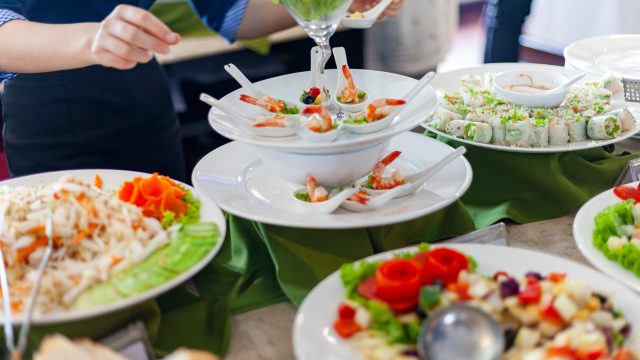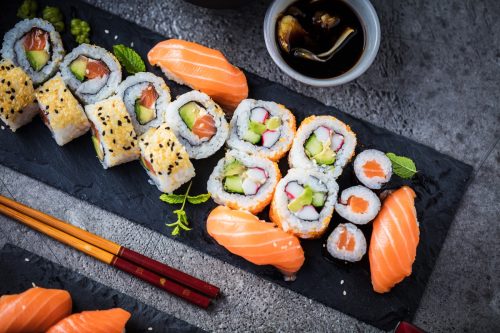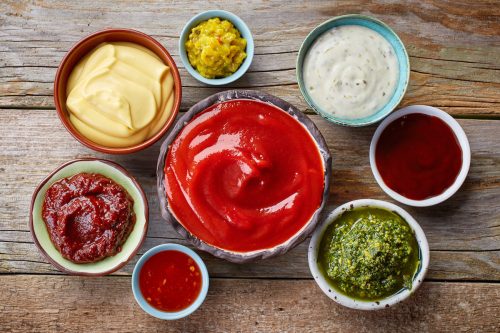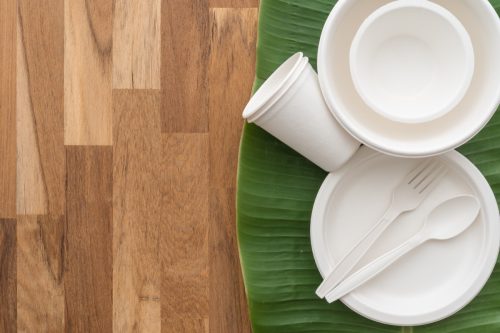5 Things You Should Never Eat on a Cruise

Going on a cruise is a great way to fully relax without having to worry about navigating through a new city, rental cars, or switching hotels. Everything is perfectly planned out so you can wind down, enjoy some sunshine, and dance the night away. And one of the most amazing parts? The food. With an abundance of options like double lobster tails, prime rib, and lamb lollipops, it can be easy for anyone to indulge at the buffet. As with any smorgasbord in a public place, however, there are dos and don’ts to keep in mind. Read on to discover the five things you should never eat on a cruise.
RELATED: This Is the Most Dangerous Place to Be on a Cruise, Experts Say.
1
Sushi or other raw food

Save the gambling for the cruise’s casino, not on the raw bar. “Definitely avoid eating raw food on a cruise,” says Tim White, founder of travel site MilePro.com. “It’s hard to keep things fresh on a cruise because cruise ships have to stock up on supplies before the trip. Hence, you don’t know how long that sushi or seafood has sat out, which makes it a big health risk.”
To ensure the food is completely safe, it would need to be kept cold at 40 degrees or lower, which is pretty hard to do even if it’s on a chilled table. As much as it’s tempting to go for a healthy option like sushi, nix it from your personal menu. It’s not worth the risk, and there are plenty of other delicious options.
RELATED: 5 Things You Should Never Bring on a Cruise, Experts Warn.
2
Communal condiments

Be careful with the ketchup and mustard bottles: Condiments can be a health risk. According to White, they can be “vulnerable to bacterial growth when left out for too long in the sun.” If you need a little mayo on your burger or ketchup for your breakfast potatoes, just be sure they’re cold and properly stored.
3
Scrambled eggs

Unpasteurized items like milk or eggs can contain dangerous bacteria like salmonella and listeria, according to Delish. Truth be told, that big pan of wet, spongy eggs in the buffet is far from enticing anyway, and more often than not probably comes from some kind of powdered egg starter. Instead, head over to the omelet station instead and ask for fresh eggs or hard-boiled, White suggests. You can thank us later.
RELATED: For more travel advice delivered straight to your inbox, sign up for our daily newsletter.
4
Local water

On the ship, there will be safe tap water options, but you need to be careful where you source your water from when you’re off the boat. The best thing to do? “Stick to bottled water,” says White. Staying hydrated is extremely important, especially in hot, tropical climates, but accidentally drinking contaminated water is a surefire way to ruin your day (and maybe your entire trip), as the Centers for Disease Control and Prevention (CDC) notes. And no one wants that!
5
Ice cream cones

We’re not going to lie: The soft-serve station is always tempting. But it’s also a big breeding ground for germs. That said, you don’t need to avoid it altogether. According to Cruise Critic, the key is to opt for a cup instead of a cone. You’ll likely use the same hand to lower the machine lever and later hold the cone, which could lead to a germ-fest before you even taste a lick of ice cream. But if you insist on a cone, consider sanitizing your hands first, or use a napkin as a buffer to hold the lever. And be sure to have some sanitizer with you afterward. The last thing you want is to get sick at sea.
RELATED: 6 Airplane Meals You Should Never Eat, Experts Warn.